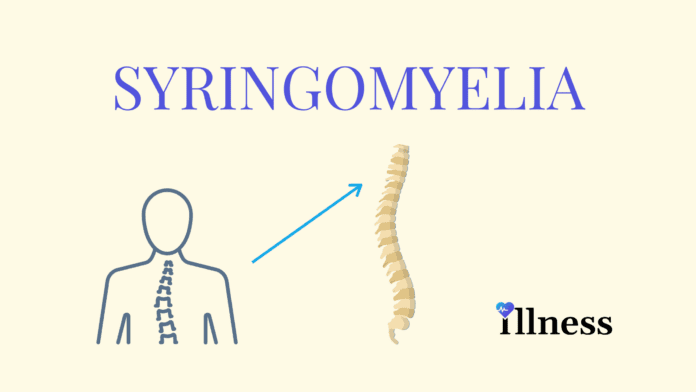Overview Of Syringomyelia
Syringomyelia is a cyst-like collection of cerebrospinal fluid (CSF) that forms in the spinal cord. Over time, it damages the spinal cord.
Commonly Associated With
- hydromyelia
- Morvan disease
- syringohydromyelia
Causes Of Syringomyelia
The fluid-filled cyst is called a syrinx.
The spinal fluid buildup may be caused by:
- Birth defects (especially Chiari malformation, in which part of the brain pushes down onto the spinal cord at the base of the skull)
- Spinal cord trauma
- Tumors of the spinal cord
- The fluid-filled cyst usually begins in the neck area. It expands slowly, putting pressure on the spinal cord and slowly causing damage.
Onset of syringomyelia is usually between 25 to 40 years old. Males are more affected than females.
Symptoms Of Syringomyelia
If the condition is due to birth defects, there may be no symptoms until 30 to 40 years old. Symptoms of syringomyelia usually appear slowly and worsen over many years. In the case of trauma, onset of symptoms may be as early as 2 to 3 months of age.
If there are symptoms, they may include:
- Headache
- Scoliosis (in children)
- Loss of muscle mass (wasting, atrophy), often in the arms and hands
- Loss of reflexes in upper limbs
- Increased reflexes in lower limbs
- Spasms or tightness in the leg or hand and arm muscles
- Muscle function loss, loss of ability to use arms or legs
- Numbness that decreases the feeling of pain or temperature; lowers the ability to feel when the skin is being touched; occurs in the neck, shoulders, upper arms, and trunk in a cape-like pattern; and slowly gets worse over time
- Pain down the arms, neck, or into the middle back or legs
- Weakness (decreased muscle strength) in the arms or legs
- Painless burn or injury of the hand
- Difficulty walking or toe walking in children
- Uncontrollable movements of the eyes (nystagmus)
- A condition that affects the nerves to the eye and face (Horner syndrome)
Exams & Tests
The health care provider will perform a physical exam and ask about the symptoms, focusing on the nervous system.
Tests that may be done include:
- MRI of the head and spine
- Spinal CT scan with myelogram (may be done when an MRI is not possible)
Treatment Of Syringomyelia
There is no known effective treatment for syringomyelia. The goals of treatment are to stop the spinal cord damage from getting worse and to improve function.
Surgery may be needed to relieve pressure in the spinal cord. Physical and occupational therapy may be needed to improve muscle function.
Ventriculoperitoneal shunting or syringosubarachnoid shunting may be needed. This is a procedure in which a catheter (thin, flexible tube) is inserted to drain the fluid buildup.



